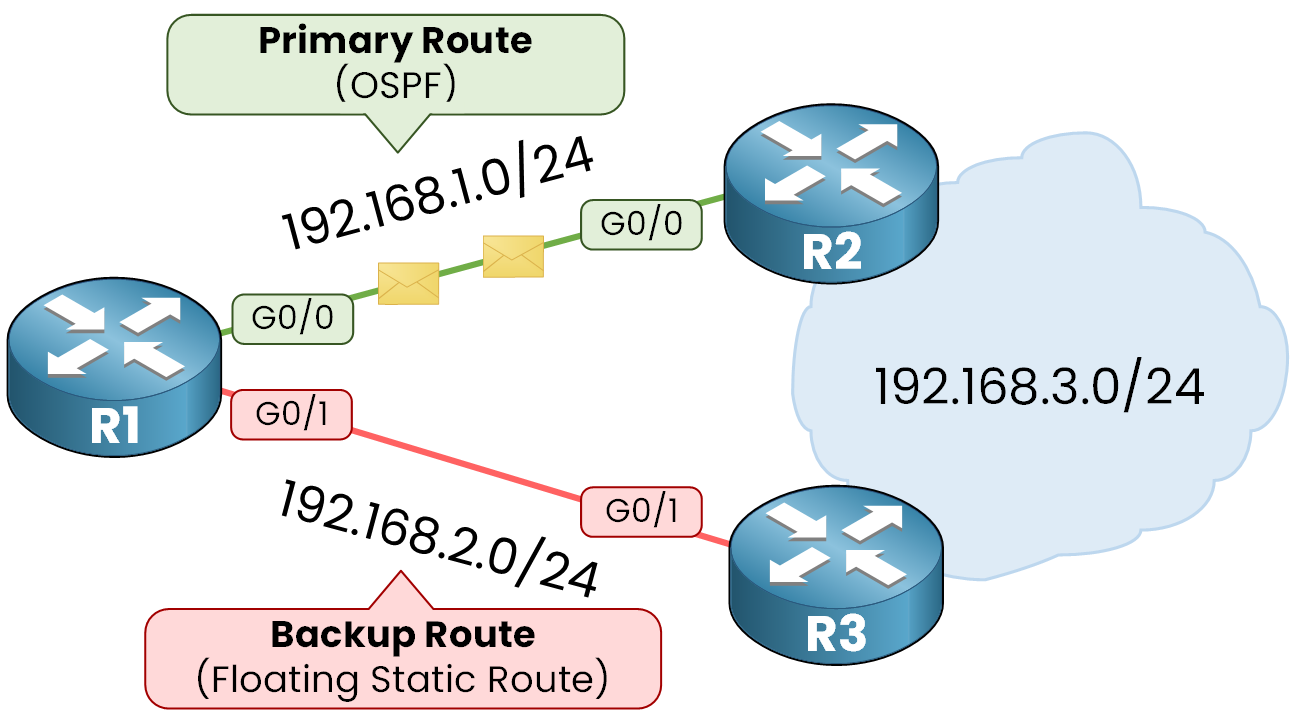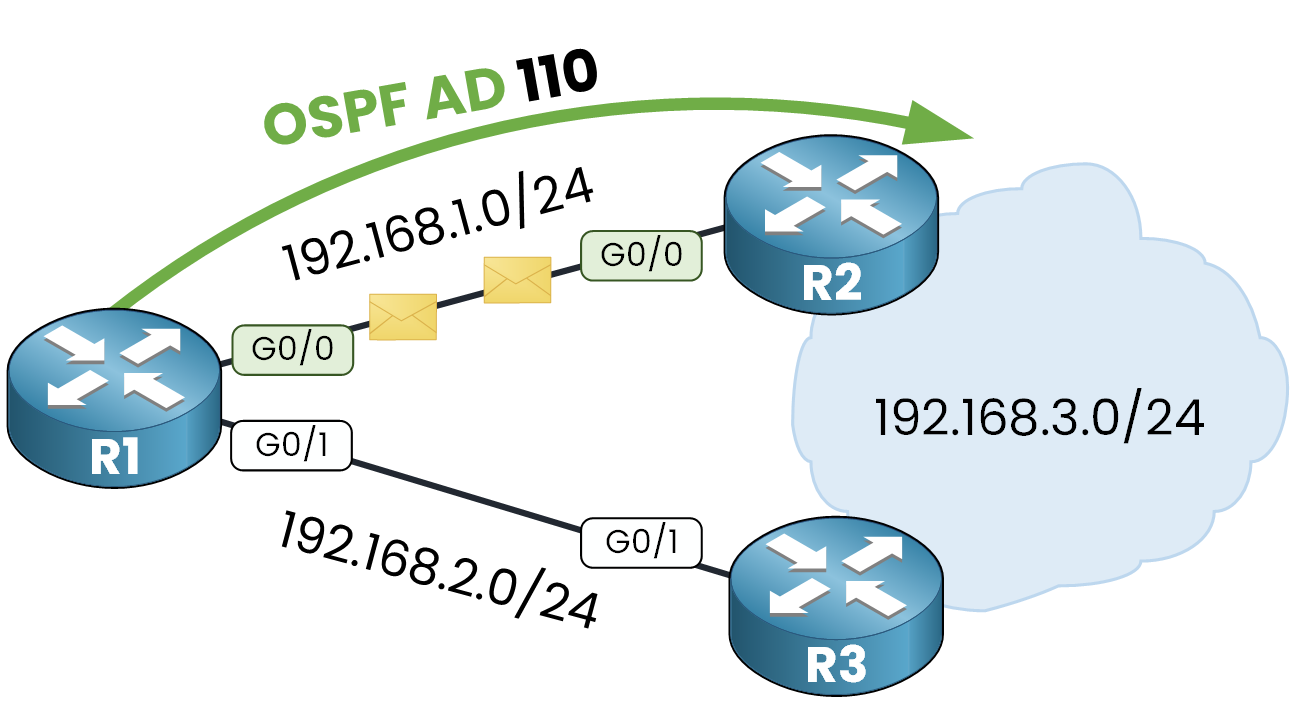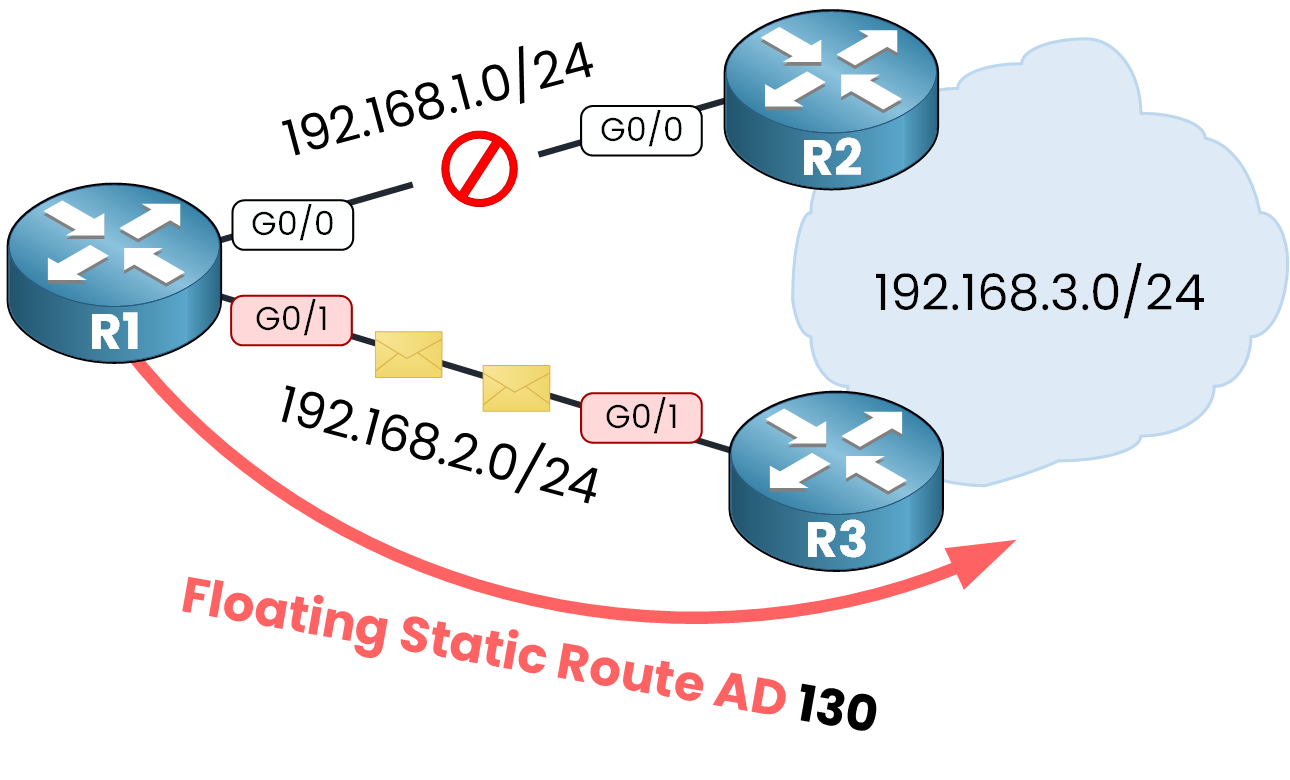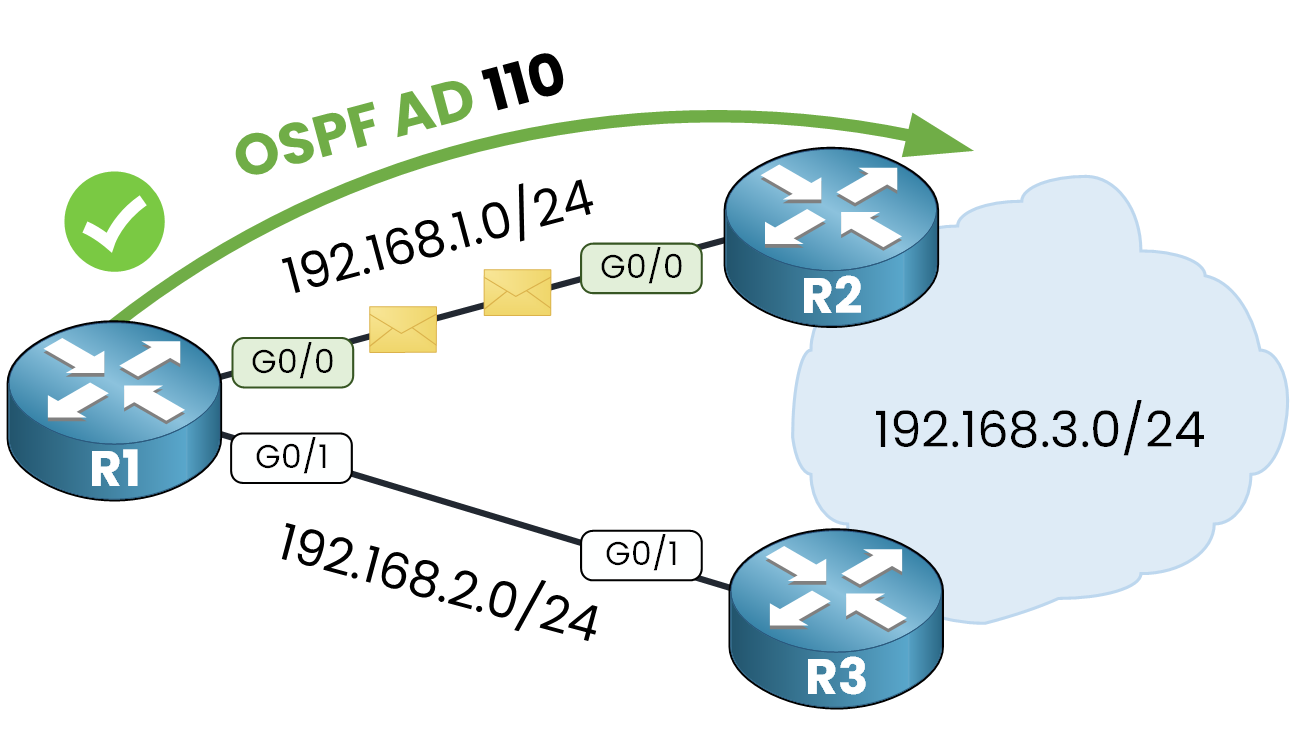Floating Static Route is a route with a Higher Administrative Distance than the primary route. This route acts as a backup route in case the primary route is down.
Let's look at the example below. Here you can see a network topology with R1, R2, and R3.
Figure 1 – Floating Static Route Topology
In this topology, R1 wants to reach the 192.168.3.0/24 network.
It can use two paths:
The primary route goes through R2 using OSPF, which has an administrative distance of 110.
The backup path uses a Floating Static route with an administrative distance of 130.
Primary Route with OSPF
R1 installs the route with the lowest administrative distance in its routing table. In this case, it will select and use the OSPF route, which has an administrative distance of 110.
R1 can send traffic through R2 and reach 192.168.3.0/24.

Figure 2 – OSPF Preferred Path and Floating Static Route Fallback
Floating Static Route on OSPF Failure
But now let me show you why the Floating Static Route is used. Imagine the link between R1 and R2 is down. The OSPF neighbor adjacency will go down and the route for the 192.168.3.0/24 network learned via OSPF will be lost.
Since the path with R1 -> R3 -> 192.168.3.0/24 does not use OSPF, a floating static route can be used. In case the primary route goes down, a static route with a higher administrative distance can be installed during the outage of the primary route.

Figure 3 – Floating Static Route Activation After OSPF Failure
Here, R1 will install the floating static route in its routing table and will be able to send traffic to 192.168.3.0/24.
Restoring the OSPF Route
When the link between R1 and R2 is back, the router will use the OSPF route again. This happens because the router prefers the route with the lowest administrative distance.

Figure 4 – Reinstating OSPF as the Primary Route After Link Recovery
Why not use OSPF everywhere?
One question you can ask yourself is: "
Okay, but why didn't we use OSPF on all routers? OSPF can decide on a new route."
That's a great question! The answer is simple: you can't always run a dynamic routing protocol everywhere.
R3 might be a client router you can’t control. Since OSPF can’t run on the link between R1 and R3, using a floating static route is the best option.40 % Complete: you’re making great progress
Unlock the rest of this lesson
If you’d like to continue your CCNA journey, simply create your free account.
Access all CCNA lessons
Practice with hands-on labs
Train with Practice exams and Quizzes
Progress tracking in your dashboard
Made by network engineers - CCNP certified
learners globally
Floating Static Route
Floating Static Route is a backup route with a higher administrative distance, ensuring connectivity when the primary path fails. In this lesson, you’ll see how to configure it and understand why it is vital for reliable network design.